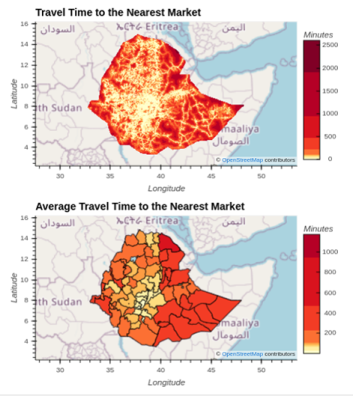DARPA World Modelers

The Defense Advanced Research Projects Agency’s (DARPA) investment in the World Modelers program created the opportunity to develop sophisticated, near real time, integrated modeling infrastructure to help policymakers quickly respond to or prevent humanitarian disasters.
The Challenge
National security threats such as conflict, displacement and migration, malnutrition, WASH (water, sanitation, and hygiene), access to local markets, food and fuel prices, food insecurity, and population growth are myriad in the East African region.
Historically, several challenges impeded policymakers’ ability to work against these development issues:
- Analysis of national security questions can take months or even years;
- Data are sparse, missing, dispersed, and unprocessed;
- Data are not unified or consolidated in a manner effective for model generation or integration; and
- Predicting outcomes was a highly technical task and thus not accessible to the majority of decision makers.
Our Role

As a part of the World Modelers program, AIR developed 13 models across the East African region for rapid assessment of events including extreme climate events by processing weather, climate, and physical data, demographic and economic data, and survey data. The models have two main themes: food security and conflict. Models were designed in a way that allowed the output of one to inform the other. For example, a crop yield prediction model provides an output that is key for the prediction of malnutrition.
Further, the models served as inputs for scenario-based, decision-support tools which allowed non-technical decision-makers to construct and run plausible scenarios for a given geography and time. The output of these tools can inform outcomes for targeted programming interventions.
Outcome
After the project, the existing models and the team that prepared them continue to inform decisions and create quantifiable sources of insight in dynamic environments through their work at AIR, such as with the Decision Support Modeling Tools for Ethiopia research project. Some models, including those focused on crops, market price, conflict and accessibility, are actively utilized by USAID in work relating to Food Security Third Party Monitoring (FSTPM).
The infrastructure is completely open source and development is continued by the Bill & Melinda Gates Foundation.
Considerations for Equity and Algorithmic Bias
AIR works to support Diversity, Equity, and Inclusion in all work, including design and development of technical solutions. An aspect of this effort is to ensure cultural and linguistic competence, increasing the speed and fit for purpose of AIR’s work.
For DARPA World Modelers, AIR provided direct access to local resources across East Africa to facilitate project start-up and ensure stakeholders had the local experts needed to make sense of context-specific data and techniques. This strategy would eventually help to inform AIR’s Culturally and Linguistically Appropriate Standards for Projects, Research, and Operations (CLAS PRO) and would go on to be a recognized framework across all AIR projects.
